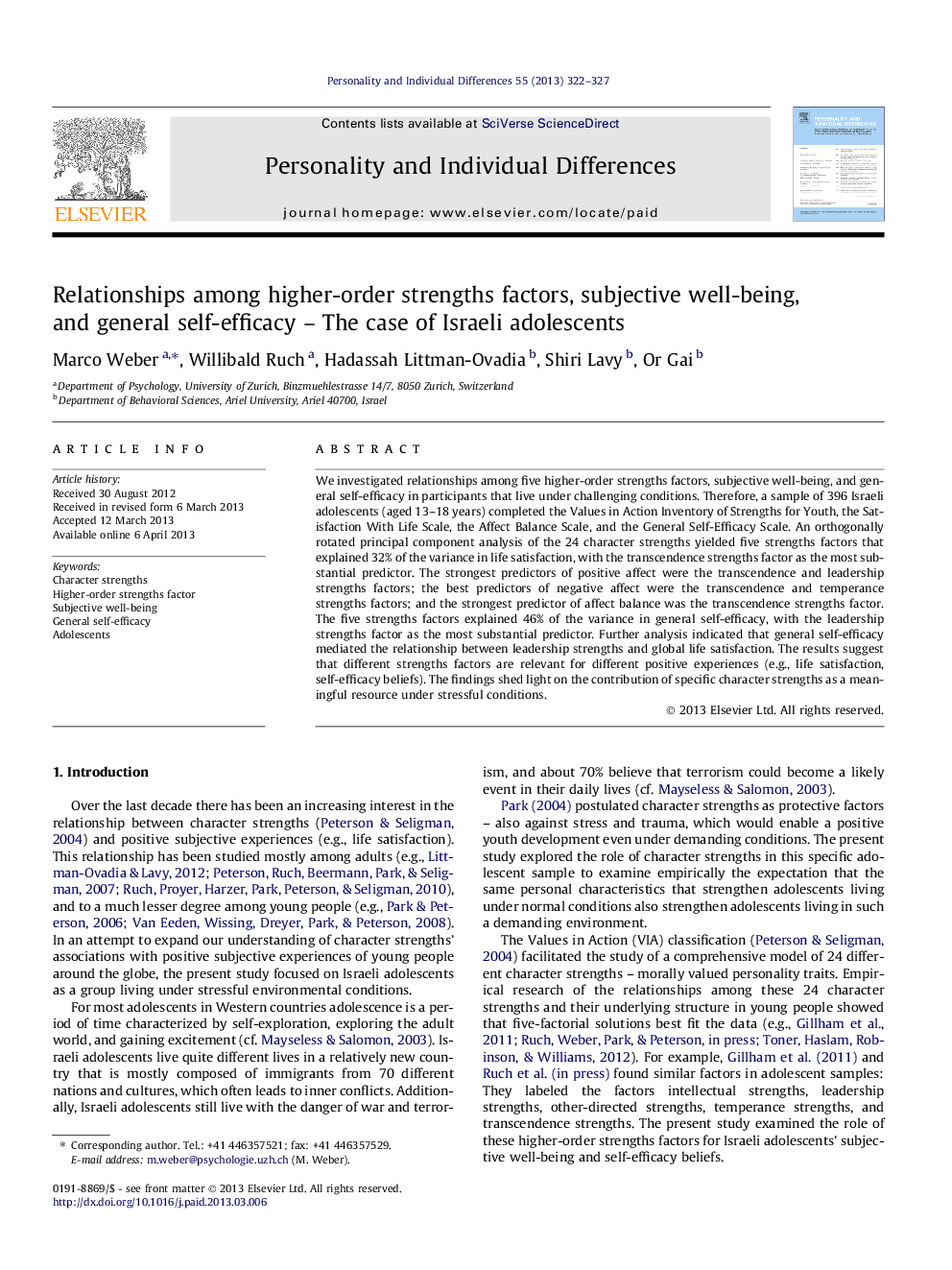| کد مقاله | کد نشریه | سال انتشار | مقاله انگلیسی | نسخه تمام متن |
|---|---|---|---|---|
| 890819 | 914009 | 2013 | 6 صفحه PDF | دانلود رایگان |

• Character strengths predict positive subjective experiences.
• Transcendence strengths predict global life satisfaction.
• Leadership, temperance, and intellectual strengths predict self-efficacy beliefs.
• Different strengths factors relate to different positive subjective experiences.
• Self-efficacy mediates the relation of leadership strengths and life satisfaction.
We investigated relationships among five higher-order strengths factors, subjective well-being, and general self-efficacy in participants that live under challenging conditions. Therefore, a sample of 396 Israeli adolescents (aged 13–18 years) completed the Values in Action Inventory of Strengths for Youth, the Satisfaction With Life Scale, the Affect Balance Scale, and the General Self-Efficacy Scale. An orthogonally rotated principal component analysis of the 24 character strengths yielded five strengths factors that explained 32% of the variance in life satisfaction, with the transcendence strengths factor as the most substantial predictor. The strongest predictors of positive affect were the transcendence and leadership strengths factors; the best predictors of negative affect were the transcendence and temperance strengths factors; and the strongest predictor of affect balance was the transcendence strengths factor. The five strengths factors explained 46% of the variance in general self-efficacy, with the leadership strengths factor as the most substantial predictor. Further analysis indicated that general self-efficacy mediated the relationship between leadership strengths and global life satisfaction. The results suggest that different strengths factors are relevant for different positive experiences (e.g., life satisfaction, self-efficacy beliefs). The findings shed light on the contribution of specific character strengths as a meaningful resource under stressful conditions.
Journal: Personality and Individual Differences - Volume 55, Issue 3, July 2013, Pages 322–327